Arduino Announces Portenta HAT Carrier for Raspberry Pi HATs
If the cap fits...

The Arduino Shield standard enables Arduino Uno layout boards to use addons that attach directly to the top of the Arduino. For Raspberry Pi we have the HAT (Hardware Attached on Top) standard that works in a similar fashion. But a new Arduino carrier board, the $45 Portenta HAT Carrier, will allow the use of the best Raspberry Pi HATs and cameras on your Arduino Portenta.
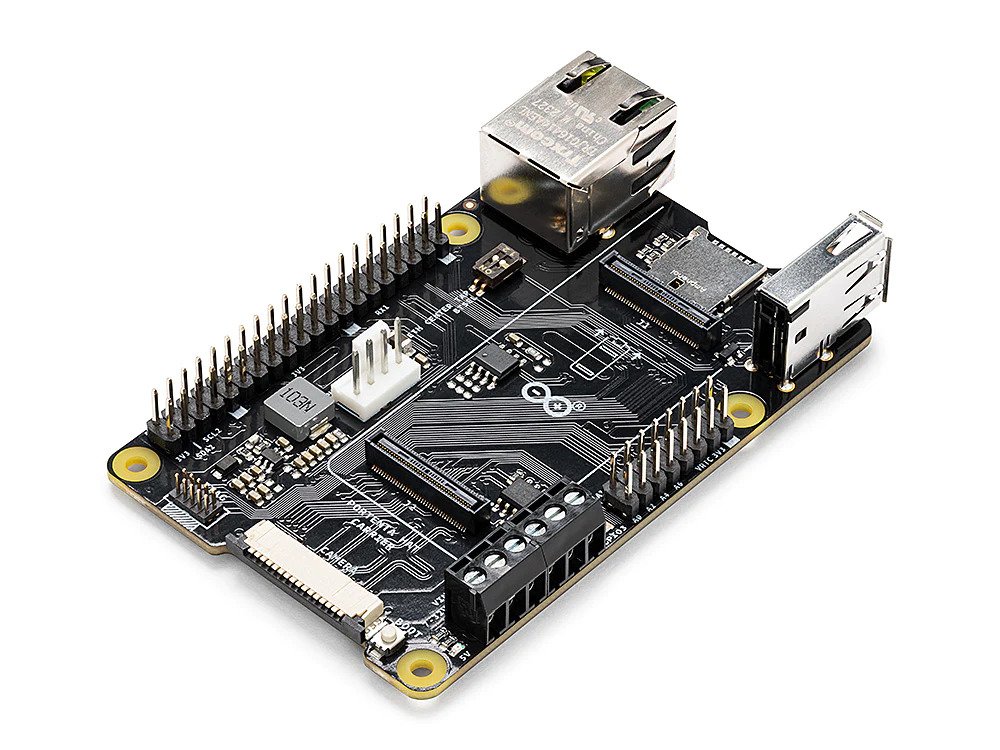
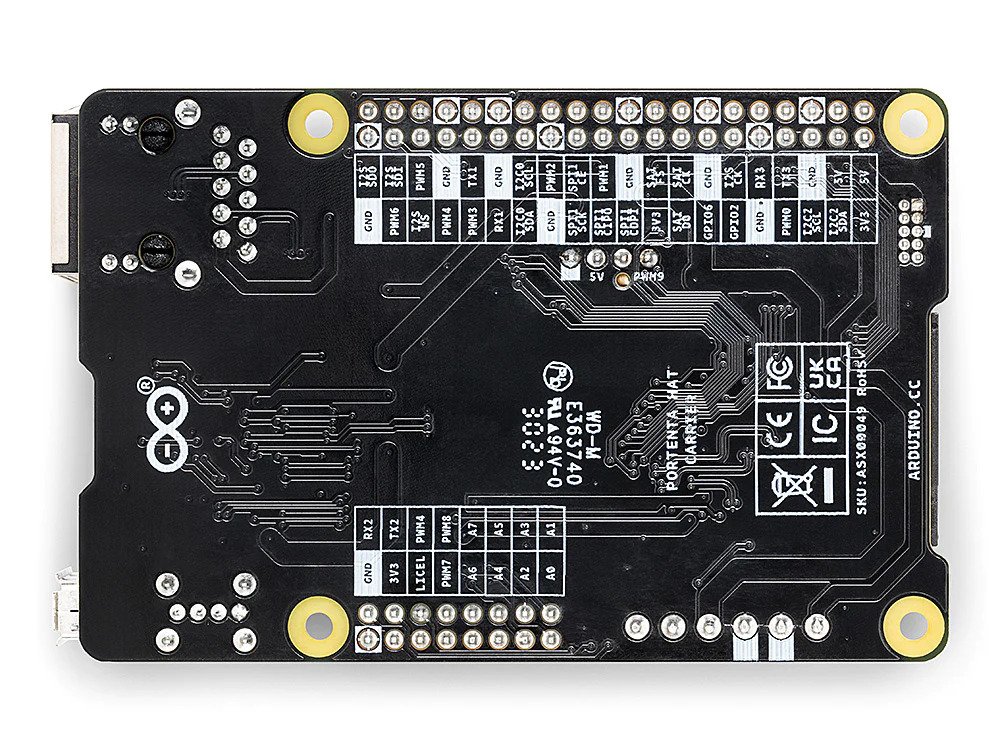
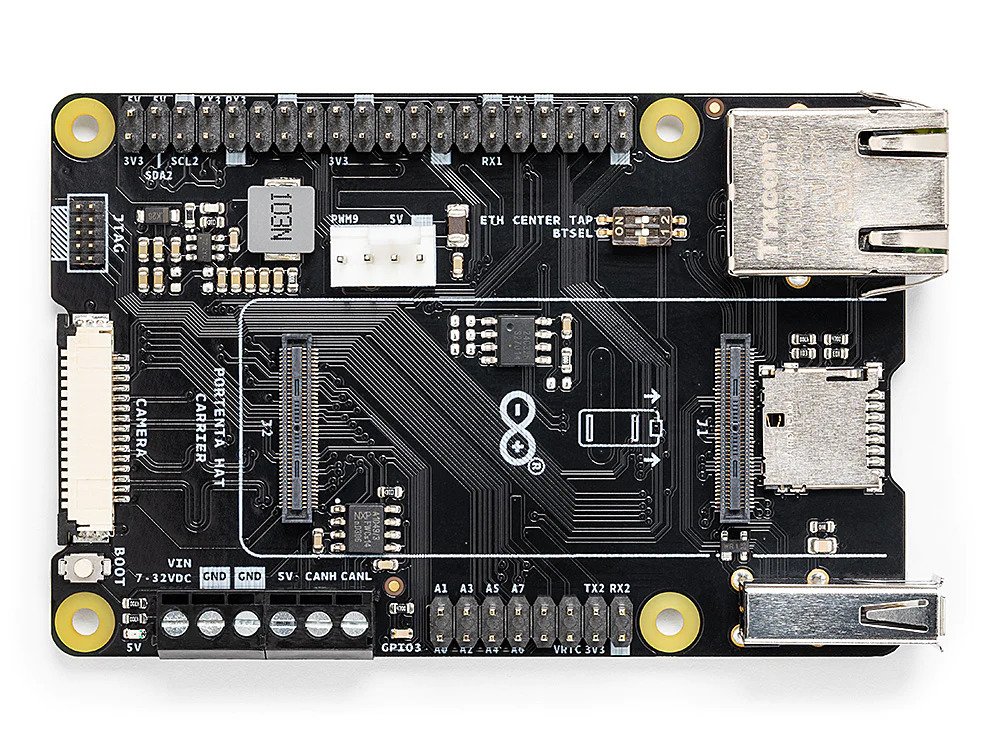
| Arduino Compatbility | Portenta X8 (ABX00049), Portenta H7 (ABX00042/ABX00045/ABX00046) and Portenta C33 (ABX00074) |
| GPIO | 40 Pin Raspberry Pi Compatible Header |
| Row 2 - Cell 0 | SPI, I2S, SAI, 2 x 5V, 2 x 3v3, 2 x I2C, 2 x UART, 7 x PWM, 8 x GND |
| Row 3 - Cell 0 | 16 x Analog Pins, Screw Terminal Block (Power and CAN Bus) |
| Communication | USB A Female connector for data logging, keyboard, mouse. |
| Row 5 - Cell 0 | Ethernet (Gigabit with X8, 100 Mbit H7 or C33) |
| Storage | Micro SD card slot |
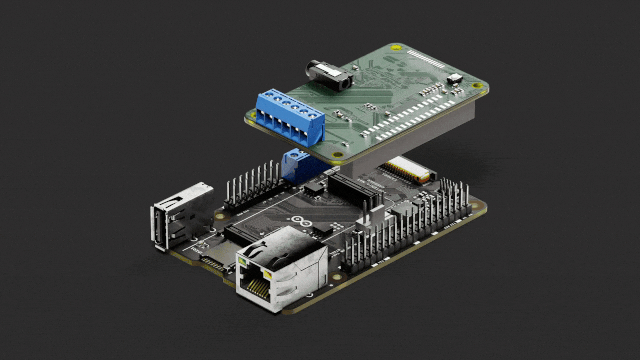
The Arduino Portenta HAT Carrier is designed for use with the $199 Portenta X8, H7 and C33 boards which use a dual high-density pins connector to attach to the carrier board. So your Arduino Uno layout boards won't be much use here. By favoring these boards, the Portenta HAT Carrier is focused on industrial applications and robotics.
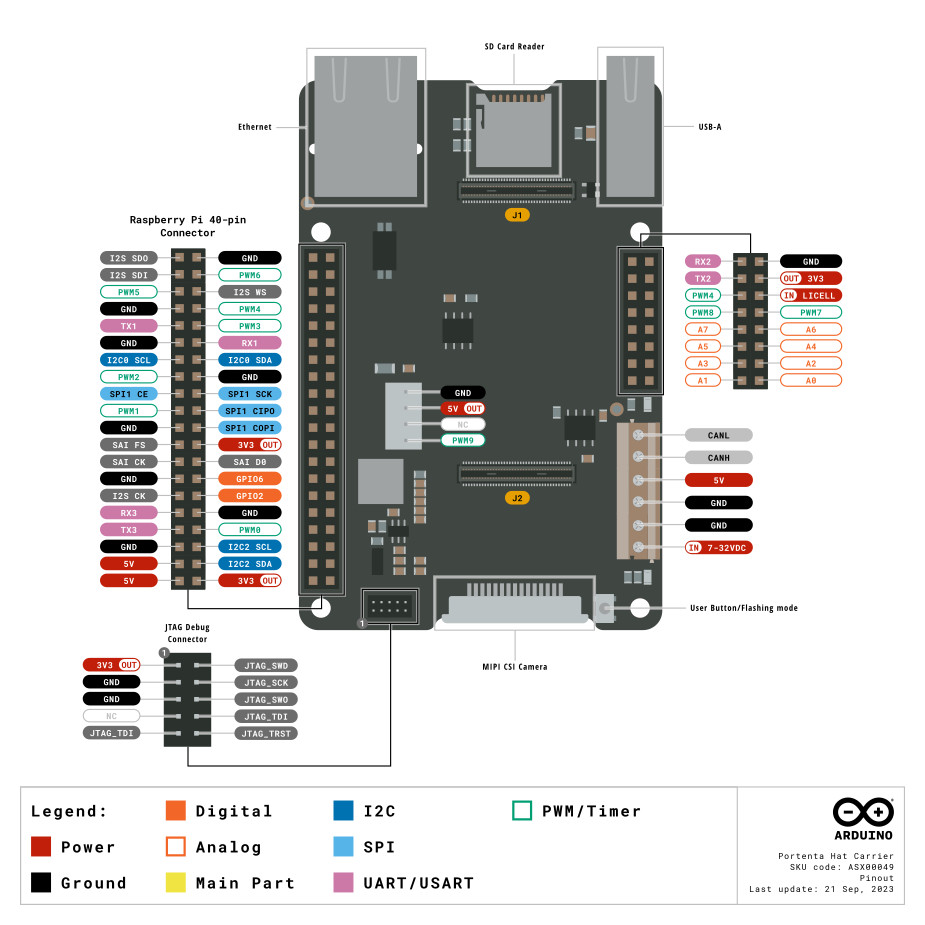
Looking at the pinout [PDF] we can see that the HAT attaches to the 40 pin GPIO and has four M2 mount points at the corner of the HAT layout. This means that the Portenta HAT Carrier conforms to the HAT standard layout, a wise choice given the sheer number of Raspberry Pi HATs.
Speaking of HATs, there are only two official supported HATs at this time. A Stepper Motor HAT and an RPi Relay Board. Using the Stepper Motor HAT we can make robots or moving projects, and the RPi Relay Board will enable us to switch higher voltages. What about other HATs? If you know your code then you can easily port the Python module of your favorite HAT, but everyone else will have to wait for others to do it (or start learning).
We can see in the user manual that we have access to a Python module which apes RPi.GPIO. Portenta.GPIO looks like a similar means to control the GPIO, but were unsure as to how compatible the software is. As we are currently seeing with the Raspberry Pi 5, changes to the software mean that HATs are currently non-functional. For Raspberry Pi alternatives, such as the Khadas VIM 4, Asus Tinkerboard, and Nvidia Jetson we often see a facsimile of RPi.GPIO — but it's never quite as good as the original.
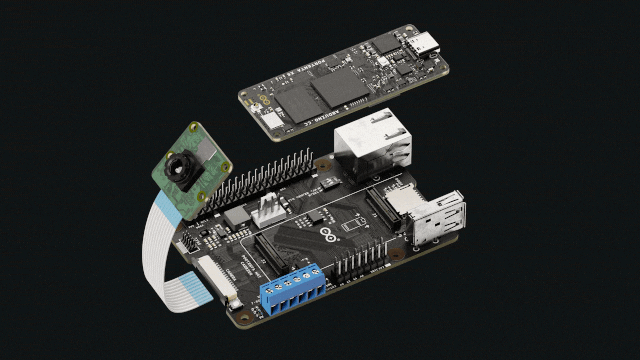
The camera connector looks like the 22 pin version found on all flagship Raspberry Pi boards — with the exception of the Raspberry Pi 5 and Zero range, which use 15 pins. With this connector we can attach compatible cameras, which include the Raspberry Pi Camera Module 1 and 2. The user manual states that this is exclusively for the Portenta X8, the top of the range board. The H7 and C33 have no MIPI interface and so cannot use the camera. Software for the camera interface appears to be bundled into the Linux OS and we can see in the manual that it is pretty straightforward to capture an image or stream video.
This is an interesting product and something that we would like to get hands on with just for the sheer enjoyment of hacking a HAT to work with an Arduino. We've done it with a Raspberry Pi Pico, so it should be worthwhile challenge.
Get Tom's Hardware's best news and in-depth reviews, straight to your inbox.

Les Pounder is an associate editor at Tom's Hardware. He is a creative technologist and for seven years has created projects to educate and inspire minds both young and old. He has worked with the Raspberry Pi Foundation to write and deliver their teacher training program "Picademy".